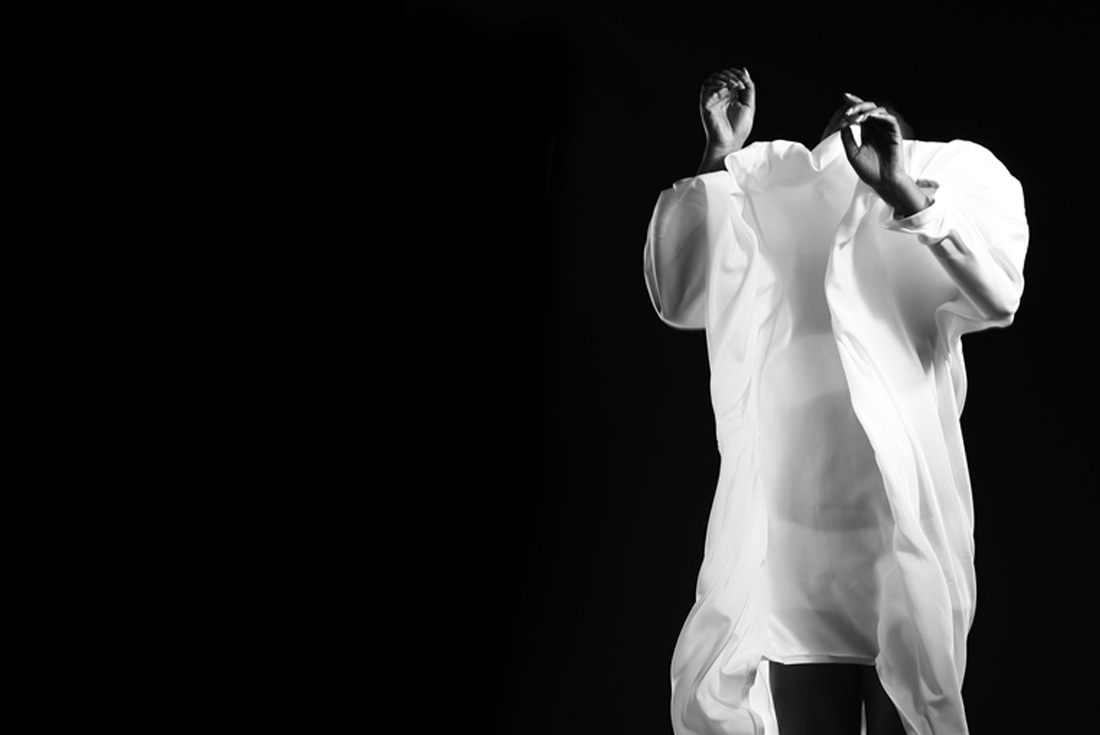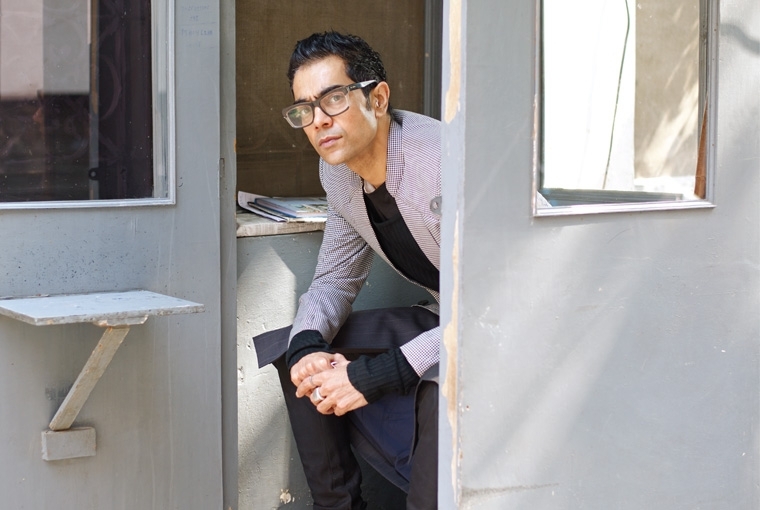
Image from P.E.L.L.A Summer Resort '15 | Photography: Studio C9 | Styling: Sid Do | Model: Fifi Augustine | MUA: Kash G

Image from P.E.L.L.A Summer Resort '15 | Photography: Studio C9 | Styling: Sid Do | Model: Fifi Augustine | MUA: Kash G
They are known for putting skirts and drapes on men as well as tuxedos and men’s shirts on women. They are blurring the lines between genders and in doing so, have created their own design vocabulary. Be it Arjun Saluja, whose progressive and futuristic vision has been deeply rooted in androgynous clothes since the inception of his brand Rishta. Be it Priyanka Ella Lorena Lama, who feels gender is becoming less relevant in today’s’ world. Her label P.E.L.L.A is all about easy and non-pretentious silhouettes. Kallol Dutta has been designing clothes keeping no particular sex in mind since the time he stepped into the fashion world. For Ujjwal Dubey, founder of Antar-Agni, the initial concepts are neutral and he tries not to conform himself to any particular category. And lastly Nitin Chawla of Theorem, designs pieces that both men and women can adopt for their wardrobes. All the above designers have stayed true to their sensibility and experimentation. Their designs are stylistically less rigid, and they as artists are unafraid of flying outside the fashion industry’s conventions and norms.

Photography by Sharad Shrivastav
Arjun Saluja
Primarily while I was living in New York and working at Patricia Fields, the leopard print stockings, the knee high latex boots, the harsh make-up that contoured the face and those beautiful buffoon wigs transformed the identity of the men working there. The change in their strut and the confidence that it exuded was captivating. Through that phase and experiencing the underbelly of the city I realised that gender did not have a lot to do with your expression. Your definition comes from your personality, and one needs to emote that through their art form.
Gender fluidity has been brewing since a few decades. Take for instance David Bowie; according to me he redefined the word ‘stereotype’. One looked at his craft not from a gender point of view but more a voice, which allowed you to be free. Today that Ziggy Stardust has penetrated through society, giving a chance for people to be themselves. In the larger picture, the acceptance of these issues is a salute to the rebellion of such artists. In India, it has been around for centuries. The Ardhanarishvara philosophy is a composite androgynous form of the Hindu religion. Even eunuchs are official in our culture...so for me it is not a trend but an integral part of us...this is the way we have lived, and will continue to do so.
Priyanka Ella Lorena Lama
The boundaries of masculinity and femininity in clothing were defined by the social environment and passed down through the ages. Not just in clothing, boundaries exist everywhere and they are meant to standardise, bring an order. These boundaries are but an illusion so when you step out of it you see what it’s actually worth. Design to me is in my mind and what I think, I feel and I create.
I don’t hold much of a belief in trends—trends will come and go, but core innovations in design and pattern-making are here to stay. Non-gendered fashion is a language and I am sure it has a long way to go. I have been seeing this happen since the Bianca Jagger days [pantsuit by YSL], the lovely androgynous beauty Annemarie Schwarzenbach who is forever etched in our memories and recently in 2011, when Pejic started to walk both the runways [femme, man]. Ever since, I think gender-neutral fashion has become the new normal but it would be just right to say it has always been present.
The social view and role of women and men today has evolved so much. It is merit and capability that is taking Centrestage—gender, religion, background, language, geography are becoming less relevant in today’s world. Fashion and clothing being an integral part of the culture, is bound to be impacted by the same. Everyone has the right to experiment with one’s consciousness; otherwise the pursuit of happiness will have no meaning. My answer would be, why not?
Nitin Chawla
I ultimately started designing pieces that both genders could adopt for their wardrobes. Reason being, many of our men’s pieces were ordered by our female clients in their sizes, and few stores even started placing orders for our men’s styles for female clients at their request. Theorem portrays that our subconscious mind has the ability to let our deeper thoughts resurface, and contemplate them in ‘Detail’. Then, ‘Storytelling & Expression’ are the two tools that give greater meaning to the products beyond their utilitarian purposes. This philosophy greatly influences our art.
I think that this trend of gender fluidity/non-gender clothing is going to stay for a good time. What we’re seeing nowadays is a profound shift in fashion, a widening acceptance of a style. Practically speaking, gender fluidity is going to prove a boon for designers. By showing men’s and women’s looks in tandem, we would be saving time and money, and honing an identity.

Photography by Sharad Shrivastav
Ujjawal Dubey
The initial concepts are gender-less, it’s more about the attitude. I try not to confine myself to the stereotypes of gender.
It’s great to see both men and women open to experimentation. Women are dressing in power-clothing and men are not shying away from drapes. It’s a form of gender equality in my art, I feel.
Gender fluidity definitely is big in fashion but that seeping in our culture will take time, I feel.

Photography by Ronny Sen
Kallol Dutta
I’ve always maintained that my garments are sexless. There is no acknowledgement of sex. Going by the notion of ‘sex is; gender means’, I’d say my clothes-making approach has included a study of gender dialectics where female and male are not at opposite ends of the spectrum but are different individual spectrums. Additionally, there’s the fact that these aren’t the only genders present. My work has always been a documentation of my reactions and engagement with my immediate environment. Until recently, there used to be an obsession with the human body, more so when it veers towards a state of decay or putrefaction. Now, coupled with that, there is this sense of urgency that I should do everything to convey the meaning of our times. Work now talks about loss, lost data, lost in translation.
I don’t really know or follow what is showcased. All this androgyny, gender fluidity etc. seems myopic and temporal. You can’t put a male model in a chiffon shirt/skirt and say you’re bridging genders. If anything it bridges stupidity and rapidness. The same applies to a female model sent down the runway in a tuxedo. How is that creating dialogue in gender fluidity if next season the same ‘designer’ sends evening gowns down the runway? It’s just not there in the DNA of most labels. It is, like you said, a trend. Some faceless corporation decided that ‘androgyny’ has to be ‘in fashion’ for the coming season. So that thought percolates into the mainstream and everyone is busy buying that trendy piece for a season or two. It’s like us sharing a picture on social media about the awareness around a particular disease, once a year, different disease every year.
Text Shruti Kapur Malhotra